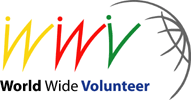
 | Printer-friendly version |
Time: 9 October 2002, 15:00-15:45 Location: A 400 Chair: Georges Chatillon (Professor, University of Paris 1, France) Presenters/ Participants: Matthew Hall (Partner and Treasurer, Australian Interactive Multimedia Industry Association, Australia
Pradhumna Dutt Kaushik (Fellow, Rajiv Gandhi Foundation, India)
Alan Jakimo (Partner Sidley Austin Brown and Wood CLP, USA)
Stephan Bruninx (Director General, Flanders Multimedia Valley, Belgium)
Stan Singh (Vice President, MUI.com) Reporter: Viban Ngo (ICVolunteers) Languages: French & English Key words: Intellectual property, definition, piracy, free, legal, illegal, taxation, tariffs, prevention of piracy, solution, cycle
If tariffs are to be levied on IP, will it be on the contents, the packages or the media through which it passes? If one had stated a hundred years ago that water could be bottled and bought, no one would have accepted it. Similar to Intellectual Property (IP) , what buyers paid for were the label and packaging and not the water itself. The exorbitant price of software that restricts free access to IP in digital form is responsible for general piracy. If piracy is not abated, it could act as a deterrent to the creation and proliferation of intellectual property. On the other hand, if the fight against piracy becomes excessive, it could restrict e-education and e-commence that benefits small and medium size industries. In e-commence, large and small companies can compete, as buyers are more concerned with the quality of goods and services than the size of the companies.
In his general introduction, Prof. Georges Chatillon of University of Paris 1, France, pointed out that we speak of intellectual property and piracy of which firms are well aware, but suggested that pirates enjoy their games so long as they are not caught and taken to court. He stated that this has an adverse effect as it reduces global marketing. Unfortunately, the target market of pirated products are youths who are not necessarily wealthy (in the United States of America alone US$ 15 billion is lost each year due to piracy). However, there are laws and regulations regarding piracy principles. How do people react when the results are not encouraging? Property rights are at the core of our culture and we try to warn people to defend property rights. Mr. Chatillon noted that we teach people how to recognize counterfeited property, and stressed that by doing so, we are the pirates. He further stressed that we tend to think that pirates are young, but that in reality they could be anyone. However, youths are targeted when it comes to:
Prof. Chatillon highlighted the fact that intellectual property has a long history and is now global and being fostered by trade agreements. The World Trade Organization (WTO) faces the challenge of harmonizing intellectual property. He stressed that if it were not harmonized it would act as a non-tariff barrier. Further, Prof. Chatillon said that existing copyright laws can be enforced with hard copy publications, but are difficult to control in the digital world. He pointed out that attempts were made three years ago to measure piracy. According to these estimates, 61% of all software used in the USA was pirated. In some countries, these figures are estimated to be as high as 91%. According to Prof. Chatillon, there is a need for mechanisms that enable the enforcement of the code of conduct of Intellectual Property. He also questioned if such enforcement would hinder the proliferation of intellectual property. He agreed that piracy had an adverse economic effect owing to piracy.
Mr. D. Muis, of the World Intellectual Property Organization (WIPO), advanced the notion that an author's rights were likely to disappear in the future with the continuation of piracy. He also pointed out that piracy was becoming socially acceptable, as copying of music tapes was in the past. He supported this by pointing out that piracy fell into a similar category as other illegal conduct that is socially accepted, such as driving fast or smoking marijuana. Further, he said that there were other areas where there were technical protection rights such as allowing one to photocopy in the library. In addition, Mr. Muis highlighted the example of the sale of bottled water, which one hundred years ago would have been socially unacceptable.
Interesting Issues
According to Mr. S. Brunninx, with free IP the music industry is likely to die. He pointed out that the intrinsic value of music was diminishing: when it was rare it was rich. Mr. A. Jakino wondered if the existing industry would participate in the new business model. Mr. Bruninx replied that whatever the developments, youth would adapt to the new model.
Conclusions
It was concluded that there is a need for copyrights on IP. If there is no protection there is no incentive, as free goods have no purchase value. It was agreed that the focus should be on solutions and not the problems of IP. Moreover, it was pointed out that we might be at the end of a cycle and paradigm, and that perhaps a new cycle was developing. The change of the model was suggested as an issue, rather than the copyright, since what is happening in the music industry has specific considerations. Consequently, there is a need to study individual cases. Further, there might be a move from the regulatory to statutory licensing.